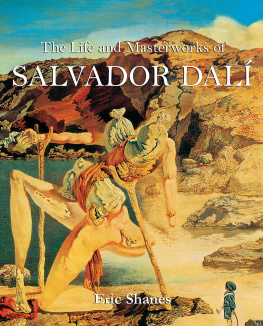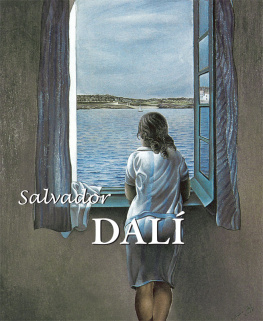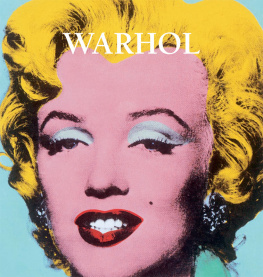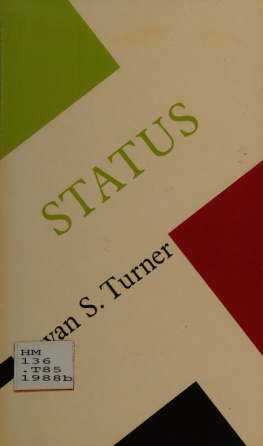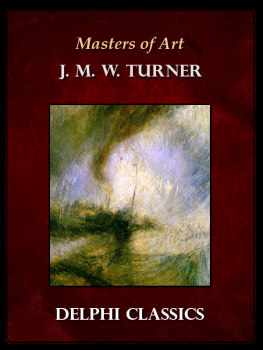Eric Shanes - J.M.W. Turner
Here you can read online Eric Shanes - J.M.W. Turner full text of the book (entire story) in english for free. Download pdf and epub, get meaning, cover and reviews about this ebook. publisher: Parkstone International, genre: Non-fiction. Description of the work, (preface) as well as reviews are available. Best literature library LitArk.com created for fans of good reading and offers a wide selection of genres:
Romance novel
Science fiction
Adventure
Detective
Science
History
Home and family
Prose
Art
Politics
Computer
Non-fiction
Religion
Business
Children
Humor
Choose a favorite category and find really read worthwhile books. Enjoy immersion in the world of imagination, feel the emotions of the characters or learn something new for yourself, make an fascinating discovery.
- Book:J.M.W. Turner
- Author:
- Publisher:Parkstone International
- Genre:
- Rating:5 / 5
- Favourites:Add to favourites
- Your mark:
- 100
- 1
- 2
- 3
- 4
- 5
J.M.W. Turner: summary, description and annotation
We offer to read an annotation, description, summary or preface (depends on what the author of the book "J.M.W. Turner" wrote himself). If you haven't found the necessary information about the book — write in the comments, we will try to find it.
J.M.W. Turner — read online for free the complete book (whole text) full work
Below is the text of the book, divided by pages. System saving the place of the last page read, allows you to conveniently read the book "J.M.W. Turner" online for free, without having to search again every time where you left off. Put a bookmark, and you can go to the page where you finished reading at any time.
Font size:
Interval:
Bookmark:
Eric Shanes
J.M.W.
TURNER

Text: Eric Shanes
Designed by:
Baseline Co Ltd
Vietnam
Confidential Concepts, worldwide, USA
Parkstone Press International, New York, USA
Image-Bar www.image-bar.com
All rights reserved. No part of this publication may be reproduced or adapted without the permission of the copyright holder, throughout the world. Unless otherwise specified, copyright on the works reproduced lies with the respective photographers. Despite intensive research, it has not always been possible to establish copyright ownership. Where this is the case, we would appreciate notification.
ISBN: 978-1-64461-840-0
Contents
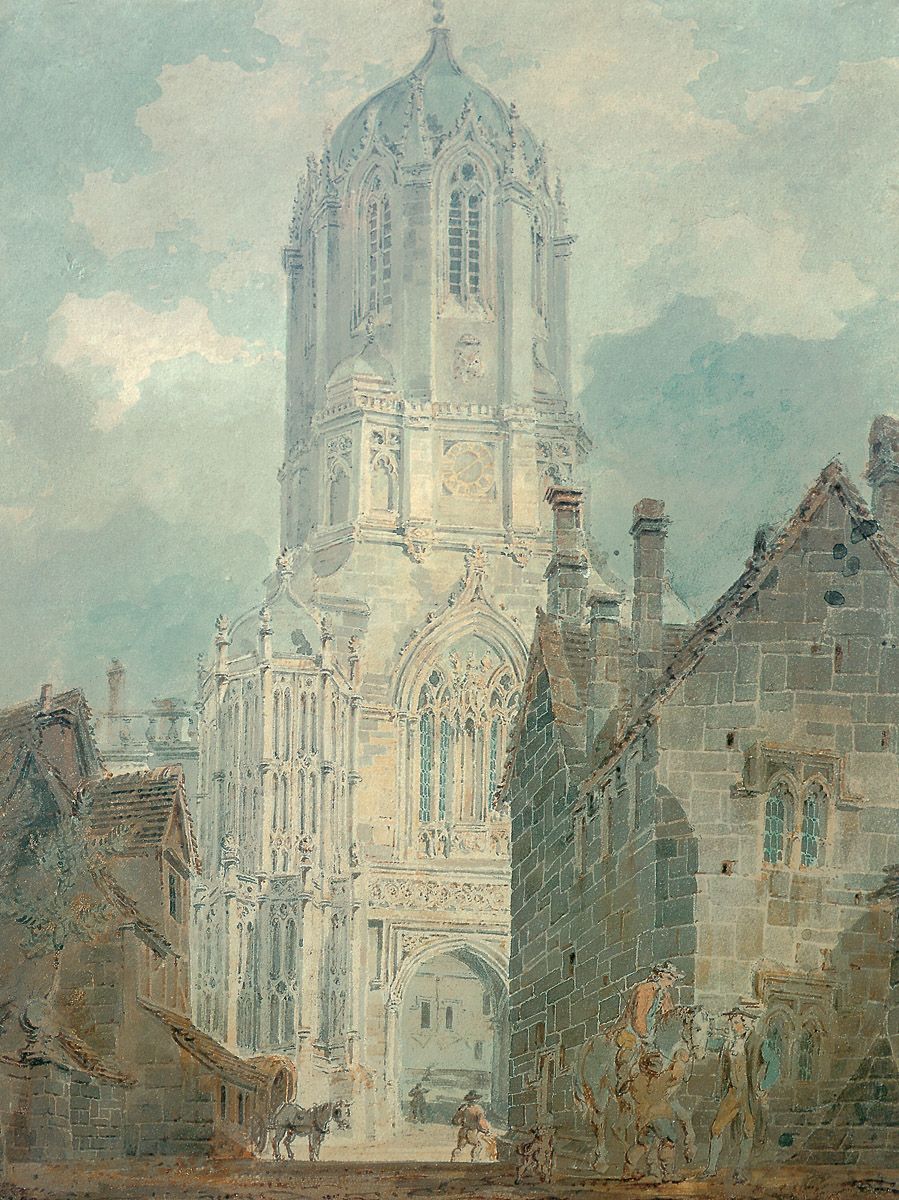
1. J.M.W. Turner Tom Tower, Christ Church, Oxford, 1792, Pencil and watercolour on white paper, 27.2 x 21.5 cm. Turner Bequest, Tate Britain, London.
From darkness to light: perhaps no painter in the history of western art evolved over a greater visual span than Turner. If we compare one of his earliest exhibited masterworks, such as the fairly low-keyed St Anselms Chapel, with part of Thomas--Beckets crown, Canterbury Cathedral of 1794, with a vividly bright picture dating from the 1840s, such as The Clyde (both of which are reproduced below), it seems hard to credit that the two images stemmed from the same hand, so vastly do they differ in appearance. Yet this apparent disjunction can easily obscure the profound continuity that underpins Turners art, just as the dazzling colour, high tonality and loose forms of the late images can lead to the belief that the painter shared the aims of the French Impressionists or even that he wanted to be some kind of abstractionist, both of which notions are untrue. Instead, that continuity demonstrates how single-mindedly Turner pursued his early goals, and how magnificently he finally attained them. To trace those aims and their achievement by means of a selective number of works, as well as briefly to recount the artists life, is the underlying purpose of this book.
Joseph Mallord William Turner was born at 21 Maiden Lane, Covent Garden, London, sometime in late April or early May 1775. (The artist himself liked to claim that he was born on 23 April which is both our national day, St Georges Day, and William Shakespeares birthday, although no verification of that claim has ever been found.) His father, William, was a wig-maker who had taken to cutting hair after wigs began to go out of fashion in the 1770s. We know little about Turners mother, Mary (ne Marshall), other than that she was mentally unbalanced, and that her instability was exacerbated by the fatal illness of Turners younger sister, who died in 1786. Because of the stresses put upon the family by these afflictions, in 1785 Turner was sent to stay with an uncle in Brentford, a small market town to the west of London. It was here he first went to school. Brentford was the county town of Middlesex, and had a long history of political radicalism, which may have surfaced much later in Turners work. But more importantly, the surroundings of the town the rural stretches of the Thames downriver to Chelsea, and the countryside upriver to Windsor and beyond must have struck the boy as Arcadian (especially after the squalid surroundings of Covent Garden), and done much to form his later visions of an ideal world.
By 1786 Turner was attending school in Margate, a small holiday resort on the Thames estuary far to the east of London. Some drawings from this stay have survived and they are remarkably precocious, especially in their grasp of the rudiments of perspective. His formal schooling apparently completed, by the late 1780s Turner was back in London and working under various architects or architectural topographers. They included Thomas Malton, Jr, whose influence on his work is discernible around this time.
After Turner had spent a term as a probationer at the Royal Academy Schools, on 11 December 1789 the first President of the Royal Academy, Sir Joshua Reynolds (1723-92), personally interviewed and admitted him to the institution. The Royal Academy Schools was then the only regular art training establishment in Britain. Painting was not taught there it would only appear on the curriculum in 1816 and students merely learned to draw, initially from plaster casts of antique statuary and then, when deemed good enough, from the nude. It took the youth about two and a half years to make the move. Amongst the Visitors or teachers in the life class were History painters such as James Barry RA and Henry Fuseli RA whose lofty artistic aspirations would soon rub off on the young Turner. Naturally, as Turner lived in the days before student grants, he had to earn his keep from the beginning.
In 1790 he exhibited in a Royal Academy Exhibition for the first time, and with a few exceptions he went on participating in those annual displays of contemporary art until 1850. In that era the Royal Academy only mounted one exhibition every year, and consequently the show enjoyed far more impact than it does today, swamped as it now is by innumerable rivals (some of the best of which are mounted by the Royal Academy itself). Turner quickly provoked highly favourable responses to his vivacious and inventive offerings.
In 1791 he briefly supplemented his income by working as a scene painter at the Pantheon Opera House in Oxford Street. This contact with the theatre bore long-term dividends by demonstrating that the covering of large areas of canvas held no terrors, that light could be used dramatically and that the stage positionings of actors and props could usefully be carried over to the staffing of images. Thus in his mature works Turner would often place his figures and/or objects in downstage left, centre and right locations when he especially wanted us to notice them.
At the 1792 Royal Academy Exhibition Turner also received a lesson that would eventually move his art into dimensions of light and colour previously unknown to painting. He was especially struck by a watercolour, Battle Abbey, by Michael Angelo Rooker ARA (1746-1801), and copied it twice in watercolour (the Rooker is today in the Royal Academy collection, London, while both of Turners copies reside in the Turner Bequest). Rooker was unusually adept in minutely differentiating the tones of masonry (tone being the range of a given colour from light to dark). The exceptionally rich spectrum of tones Rooker had deployed in his Battle Abbey demonstrated something vital to Turner. He emulated Rookers multiplicity of tones not only in his two copies but also in many elaborate drawings made later in 1792. Very soon the young artist attained the ability to differentiate tones with even more subtlety than the master he emulated.
The technical procedure used for such tonal variation was known as the scale practice, and it was rooted in the inherent nature of watercolour. Because watercolour is essentially a transparent medium, it requires its practitioners to work from light to dark (for it is very difficult to place a light mark over a darker one but not the reverse). Instead of mixing up a palette containing all of the many tones he required for a given image, Turner instead copied Rooker and mixed up merely one tone at a time before placing it at different locations across a sheet of paper. Then, while that work dried, he would take some of the remaining tonal mixture off his palette and brush it onto various locations in further watercolours, which were laid out around his studio in a production line. By the time he returned to the first drawing it would have dried. Turner would then slightly darken the given colour on his palette and add the next note down the tonal scale from light to dark to this work and its successors.
Font size:
Interval:
Bookmark:
Similar books «J.M.W. Turner»
Look at similar books to J.M.W. Turner. We have selected literature similar in name and meaning in the hope of providing readers with more options to find new, interesting, not yet read works.
Discussion, reviews of the book J.M.W. Turner and just readers' own opinions. Leave your comments, write what you think about the work, its meaning or the main characters. Specify what exactly you liked and what you didn't like, and why you think so.


